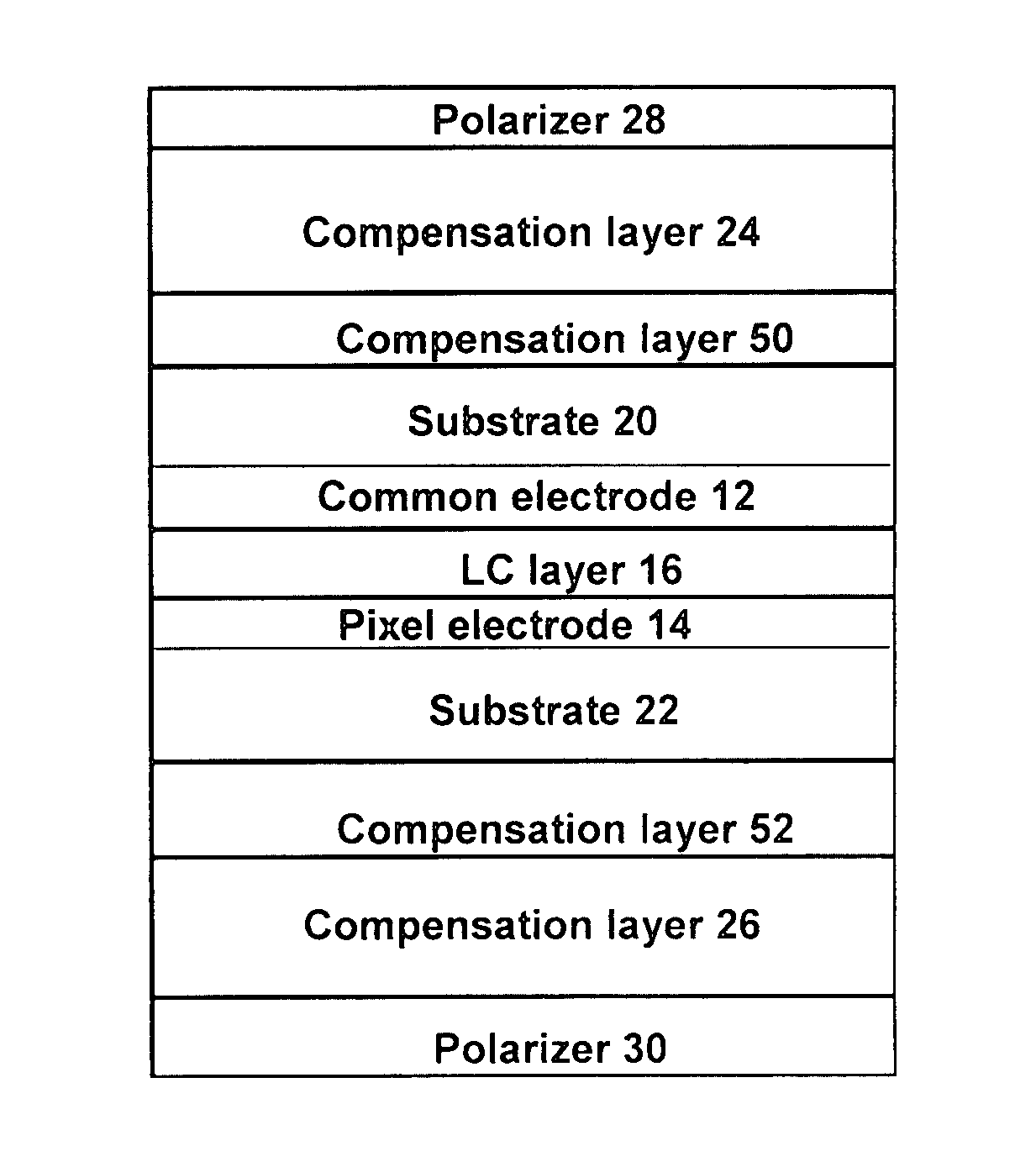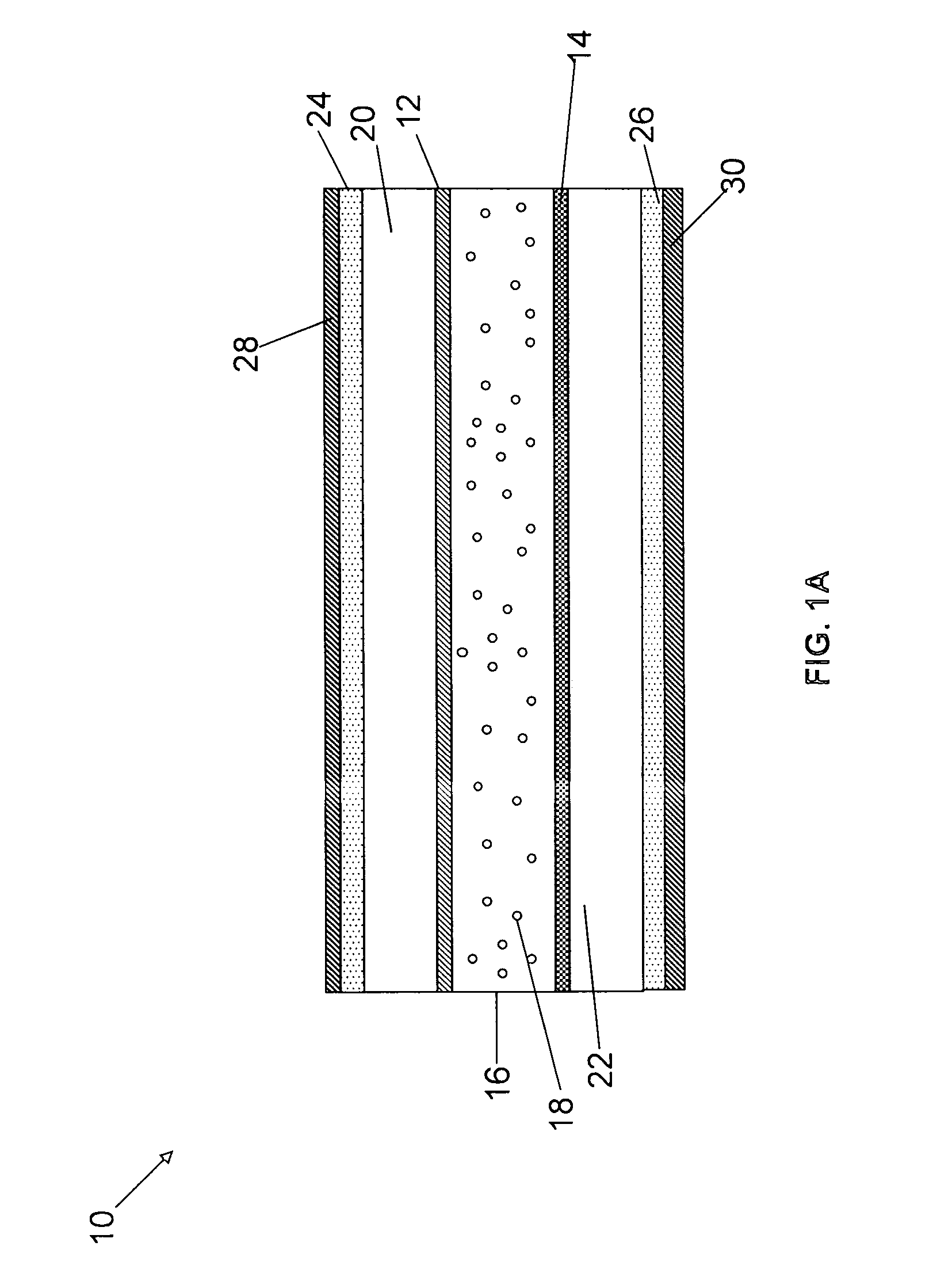Contrast ratio and viewing angle improvement for a TN- LCD
a technology of applied in non-linear optics, instruments, optics, etc., can solve the problems of low contrast, narrow viewing angle, tn lcd, etc., and achieve the effect of improving both contrast ratio and viewing angle, and improving the contrast ratio of an lcd
- Summary
- Abstract
- Description
- Claims
- Application Information
AI Technical Summary
Benefits of technology
Problems solved by technology
Method used
Image
Examples
example
Contrast Ratio Calculation to Generate Simulated Results
[0069] The contrast ratio of the TN LCDs of the invention can be modeled with both two-dimensional and thee-dimensional models, such as Autronic 2-D LC Modeling software (2-D modeling) and Shintech 3-D LC Modeling software (3-D modeling). Geometrical optics approximation can be used for such modeling to make a fast estimation on the TN LCD electrical optical transmission. The contrast ratio improvement of the LCDs of the invention can arise from the shift of the contrast ratio peak from off-normal incidence to close to normal incidence, without or minimal loss of contrast ratio peak.
[0070] A standard 90-degree TN cell with a cell gap of 2.2 μm and LC ZOC-5057LA available from Chisso Corporation as an LC material are considered in the calculations below. The pretilt angle is 20-degrees. In the calculation, optical compensation layers 24 and 26, having no=1.51, ne=1.50, and layer thickness d=10 nm to 200 nm are considered. The...
PUM
| Property | Measurement | Unit |
|---|---|---|
| applied voltage | aaaaa | aaaaa |
| applied voltage | aaaaa | aaaaa |
| viewing angle | aaaaa | aaaaa |
Abstract
Description
Claims
Application Information
 Login to View More
Login to View More - R&D
- Intellectual Property
- Life Sciences
- Materials
- Tech Scout
- Unparalleled Data Quality
- Higher Quality Content
- 60% Fewer Hallucinations
Browse by: Latest US Patents, China's latest patents, Technical Efficacy Thesaurus, Application Domain, Technology Topic, Popular Technical Reports.
© 2025 PatSnap. All rights reserved.Legal|Privacy policy|Modern Slavery Act Transparency Statement|Sitemap|About US| Contact US: help@patsnap.com



